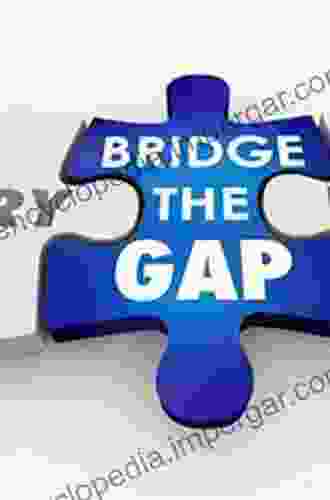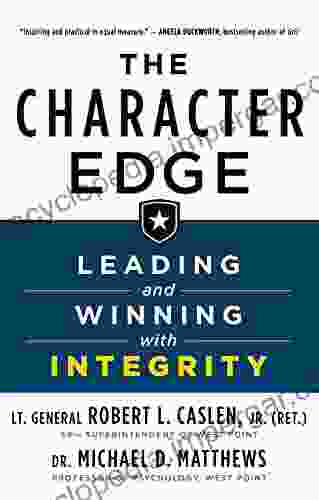Why Hospitals Fail: Delving into the Disconnect Between Theory and Practice

The healthcare industry is constantly striving to improve patient outcomes and deliver exceptional care. However, despite advances in medical technology and knowledge, a significant chasm often exists between the theoretical principles guiding hospital operations and the practical realities encountered on the ground. This disconnect can lead to widespread failure within hospital systems, with devastating consequences for patients, staff, and the broader healthcare ecosystem.
The Disconnect Between Theory and Practice
In theory, hospitals are meticulously designed to provide optimal care. They adhere to best practices, implement evidence-based protocols, and employ highly trained professionals. However, in practice, a multitude of factors can disrupt this ideal scenario:
- Resource Constraints: Budgetary limitations and funding uncertainties can lead to understaffing, outdated equipment, and inadequate supplies, compromising patient care.
- Complex Workflows: Hospital operations involve intricate processes and workflows that require seamless coordination. When these are poorly designed or executed, errors and inefficiencies can arise.
- Human Factors: Fatigue, stress, and cognitive biases can impair healthcare professionals' decision-making and lead to suboptimal outcomes.
Consequences of Hospital Failure
The failure of hospitals has far-reaching consequences for all stakeholders:
- Patients: Poor care can lead to preventable complications, increased mortality rates, and diminished quality of life.
- Healthcare Professionals: Burnout, dissatisfaction, and compromised job performance can result from excessive workloads and systemic deficiencies.
- Healthcare System: Hospital failures contribute to increased healthcare costs, reduced efficiency, and a decline in public trust.
Addressing the Disconnect
Overcoming the disconnect between theory and practice requires a multifaceted approach:
- Leadership and Governance: Strong leadership is crucial to establish a culture of accountability, transparency, and continuous improvement.
- Process Optimization: Lean Six Sigma and other quality improvement methodologies can streamline workflows, reduce errors, and enhance efficiency.
- Staffing and Training: Hospitals must invest in adequate staffing levels and provide comprehensive training to ensure healthcare professionals have the skills and knowledge they need.
- Technology Adoption: Implementing electronic health records, telemedicine, and other technologies can improve patient engagement, streamline communication, and reduce administrative burdens.
- Patient Involvement: Engaging patients in their care planning and decision-making fosters a sense of ownership and improves outcomes.
The Importance of Understanding Failure
Failure is an inherent part of any complex system, and healthcare is no exception. By acknowledging and analyzing our failures, we can learn invaluable lessons and strive for continuous improvement. The book "Why Hospitals Fail: Between Theory and Practice" delves into real-world case studies of hospital failures, providing insightful perspectives on the underlying causes and the potential for systemic change.
Quotes from Healthcare Leaders
"The gap between theory and practice is a persistent challenge in healthcare. We need to empower our frontline staff with the tools and support they need to deliver the highest quality care." - Dr. Elizabeth Ellison, President, American Hospital Association
"Improving hospital operations requires a collaborative effort from leaders, clinicians, and administrators. Only by working together can we bridge the theory-practice divide." - Dr. Peter Nielsen, CEO, Mayo Clinic
Call to Action
The health and well-being of our communities depend on the success of our hospitals. By addressing the disconnect between theory and practice, we can transform healthcare systems into centers of excellence that provide exceptional care for all patients. The book "Why Hospitals Fail: Between Theory and Practice" is an essential resource for anyone seeking to understand the complexities of hospital operations and the path to improvement.
Do you want to contribute by writing guest posts on this blog?
Please contact us and send us a resume of previous articles that you have written.
 Book
Book Novel
Novel Page
Page Chapter
Chapter Text
Text Story
Story Genre
Genre Reader
Reader Library
Library Paperback
Paperback E-book
E-book Magazine
Magazine Newspaper
Newspaper Paragraph
Paragraph Sentence
Sentence Bookmark
Bookmark Shelf
Shelf Glossary
Glossary Bibliography
Bibliography Foreword
Foreword Preface
Preface Synopsis
Synopsis Annotation
Annotation Footnote
Footnote Manuscript
Manuscript Scroll
Scroll Codex
Codex Tome
Tome Bestseller
Bestseller Classics
Classics Library card
Library card Narrative
Narrative Biography
Biography Autobiography
Autobiography Memoir
Memoir Reference
Reference Encyclopedia
Encyclopedia 011 Edition Kindle Edition
011 Edition Kindle Edition Shabaka Gibson
Shabaka Gibson Mykel J Austin
Mykel J Austin Shirley Reynolds
Shirley Reynolds Lynn Hannon
Lynn Hannon Lou Holtz
Lou Holtz Caroline Knapp
Caroline Knapp Jeffrey A Helewitz
Jeffrey A Helewitz Callie Smith Grant
Callie Smith Grant Larry Gwin
Larry Gwin Harsha Vardhan
Harsha Vardhan Cheri Dinovo
Cheri Dinovo Jessica Martin
Jessica Martin Nicola Sly
Nicola Sly Sandy Gerber
Sandy Gerber Keith Leighton
Keith Leighton Richard Wiseman
Richard Wiseman Phil H Listemann
Phil H Listemann Nora Roberts
Nora Roberts Water Environment Federation
Water Environment Federation
Light bulbAdvertise smarter! Our strategic ad space ensures maximum exposure. Reserve your spot today!

 Amir SimmonsUnlocking Continuous Improvement: A Comprehensive Guide to Kaizen Planning,...
Amir SimmonsUnlocking Continuous Improvement: A Comprehensive Guide to Kaizen Planning,... Paul ReedFollow ·7.7k
Paul ReedFollow ·7.7k Charles BukowskiFollow ·18.2k
Charles BukowskiFollow ·18.2k Leon FosterFollow ·2.1k
Leon FosterFollow ·2.1k Roger TurnerFollow ·8.9k
Roger TurnerFollow ·8.9k Hassan CoxFollow ·18.2k
Hassan CoxFollow ·18.2k Jules VerneFollow ·9.4k
Jules VerneFollow ·9.4k Scott ParkerFollow ·7.5k
Scott ParkerFollow ·7.5k Alexander BlairFollow ·12.8k
Alexander BlairFollow ·12.8k

 Terence Nelson
Terence NelsonSocial Dynamics in Systems Perspective: New Economic...
The world we live in is a complex and...

 Deacon Bell
Deacon BellUnlock the Secrets of Treasury Process Internal Controls:...
In today's competitive business...

 Finn Cox
Finn CoxThe Path Ahead: Green Energy and Technology
Embark on the...

 Rob Foster
Rob FosterThermodynamics of Surfaces and Capillary Systems: A...
Surfaces and...

 Nathan Reed
Nathan ReedUnlock the Secrets to Writing Remarkable Business School...
Embarking on the journey to business...

 David Foster Wallace
David Foster WallacePrinciples and Applications, Second Edition: Your Gateway...
In the ever-evolving realm of...









